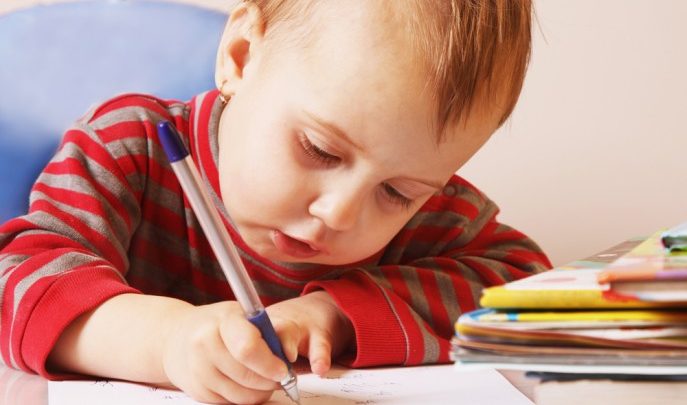When Should Children Move From Mark Making To Being Formally Taught Writing?

This is a tricky dilemma for educators in that the curriculum expectations in many establishments do not match the evidence from research

Paediatric Occupational Therapist, Sian Eckersley, summed up the problem in her article on handwriting, saying:
“The child’s stages of development and ‘readiness’ for handwriting need to be taken into consideration. All research tends to agree that children should not be taught handwriting before they are ready as this can result in creating writing difficulties that are hard to reverse. Letter formation requires the integration of visual, motor, sensory and perceptual systems and it has been concluded that most kindergarten children who are typically developing should be ready for formal handwriting instruction in the latter half of the kindergarten school year [5-6 year olds – Year ].”
What about providing grips to help children hold a pencil correctly?
How children hold a pencil is developmental. So offering grips and special pens or pencils too early can be unhelpful. Children need to be developmentally ready. Children need to be naturally holding a pencil in their fingers rather than their palm.
With very young children, it can be helpful to repeatedly make the link between the marks they make and the writing process. This can be achieved through shared work, modelling writing and providing a variety of contexts, materials and resources. It can be helpful to remember this is a combination of:
• Independent writing which may range from scribbles to sentences depending on age and ability. It also includes symbols – drawings represent meaning. Always praise children’s efforts and encourage individuals to read back what they have written or discuss what they have drawn.
• Scribing down children’s suggestions and ideas in a way which actively involves the children
• Copying – this might be other children’s work, environmental print, text requested, or with older children, using a word bank.
• Modelling – adults can model writing for a purpose. This helps children see that writing has meaning and is a form of communication.
The role of the adult is to:
• Value mark making in all its forms: writing, drawing and on a range of surfaces outside using a variety of tools. We need to value the process and not simply the end product.
• Develop awareness of other languages especially those spoken by children and including signing and Braille.
• Use mathematical graphics but do not introduce formal symbols until developmentally ready.
• Sensitive support, ensuring time and space for mark making
• Talk with children and engage them in conversation. Then showing how what they say can be written and read
• Focus on the mark-making process rather than only the end product.
• Celebrate these and value outdoor mark making as much as indoor mark making, along with similar skills such as drawing, creating symbols and model making.
• Ways of building on the children’s interests. Child-led mark making. Look at what children like to do outside and build mark making opportunities into this.
• Ensure you capture mark making so that children can re-visit and reflect and build upon their achievements. This can be achieved through photos, scribing or recording the stories and sharing through various communication channels.
• Role modelling mark making. Talking aloud about your thinking and what your marks represent.
• Take time to observe, listen and analyse children’s mark making to understand the context and purpose, and, where appropriate, enrich or extend their thinking.
• Work with parents and carers so they understand that mark making happens outside and often in different ways to indoors.
• Valuing and respecting drawings, writings and models brought in from home. Free flow scribbles have meaning to the child which created them.
• When children write their own name, it has a special meaning and relevance to the child – it is part of their sense of belonging. This is often of significance to their parents too, similar to when a child utters their first word.
• Avoid bombarding children with questions and correcting or altering children’s marks.
Juliet Robertson is an Education consultant specialising in outdoor learning and play at Creative Star Learning, and is also an author.
Her book Dirty Teaching: A Beginner’s Guide to Learning Outdoors was an Amazon Education Bestseller in 2014 and The People’s Book Award Finalist in 2015.
Her latest book, Messy Maths: An Outdoor, Playful Approach is available to pre-order. Publication date set for end of May 2017.











